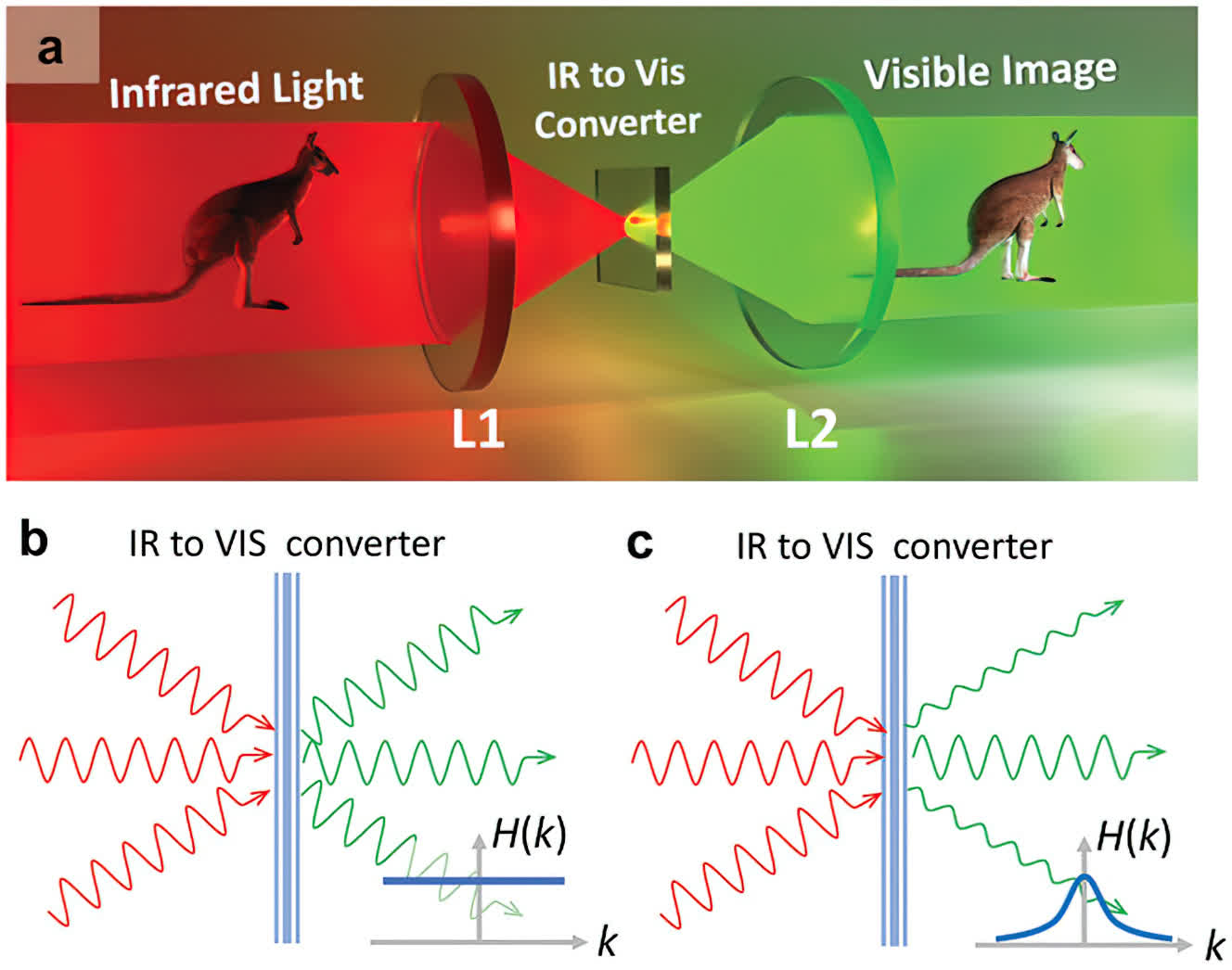One thing to look ahead to: Night time imaginative and prescient goggles have their makes use of but additionally many drawbacks, together with their weight. A brand new growth eliminates this cost-benefit evaluation – in reality, it might revolutionize evening imaginative and prescient applied sciences as we all know them. Researchers have created an infrared filter that’s thinner than a chunk of cling wrap, weighs lower than a gram, and will be positioned over customary eyeglasses to permit the wearer to see in the dead of night.
Night time imaginative and prescient applied sciences have a variety of purposes, from sports activities to army and medical operations. Nevertheless, they’re restricted by cumbersome light-processing and cryogenic cooling elements, in addition to their reliance on slender bandgap semiconductors, resembling InGaAs, which require low-temperature operation and have excessive noise ranges.
Moreover, these methods usually block seen mild. This gear can weigh greater than two kilos, making it impractical and probably unsafe to strap on a pair of goggles and go for a nighttime run.
Researchers in Australia have now found that utilizing metasurface-based up-conversion know-how – an ultra-thin materials that may seize infrared and visual mild on the identical time – on a regular basis eyewear will be augmented with evening imaginative and prescient. They printed their findings final month in Superior Supplies.
The researchers, from TMOS, the ARC Centre of Excellence for Transformative Meta-Optical Programs, created an infrared filter that’s thinner than a chunk of cling wrap, weighs lower than a gram, and will someday be positioned on an odd pair of glasses.
A have a look at conventional evening imaginative and prescient know-how underscores the complexity of this filter’s job. Conventional evening imaginative and prescient requires infrared photons to go by a lens, encounter a photocathode that transforms these photons into electrons, which then go by a microchannel plate to extend the variety of electrons generated.
These electrons journey by a phosphor display screen to be reconverted again into photons, producing an intensified seen picture that may be seen by eye. These components require cryogenic cooling to stop thermal noise additionally from being intensified.
In distinction, with the metasurface-based upconversion know-how, photons go by a single resonant metasurface the place they’re blended with a pump beam. The resonant metasurface enhances the vitality of the photons, changing them into the seen mild spectrum – no electron conversion wanted. It additionally works at room temperature, eliminating the necessity for cumbersome and heavy cooling methods. Moreover, with up-conversion know-how, imaging methods can seize each seen and non-visible mild in a single picture.

The researchers’ unique know-how featured a gallium arsenide metasurface. Their new metasurface is created from lithium niobate, which is totally clear within the seen vary, making it way more environment friendly. Moreover, the photon beam is unfold over a wider floor space, limiting angular lack of knowledge.
The researchers’ first demonstration of high-resolution up-conversion imaging transformed 1550 nm infrared mild to seen 550 nm mild in a non-local metasurface. They selected these wavelengths as a result of 1550 nm infrared mild is usually utilized in telecommunications, and 550 nm is seen mild to which human eyes are extremely delicate, in response to research creator Rocio Camacho Morales. “Future analysis will embody increasing the vary of wavelengths the machine is delicate to, aiming to acquire broadband IR imaging, in addition to exploring picture processing, together with edge detection.”



